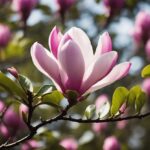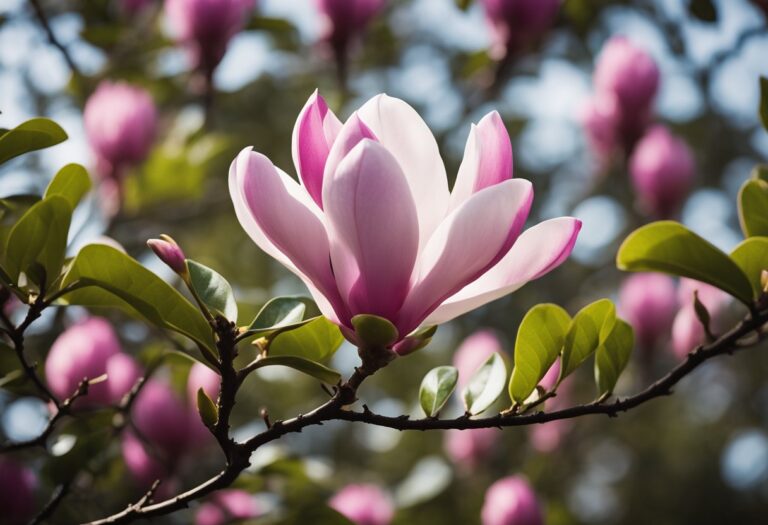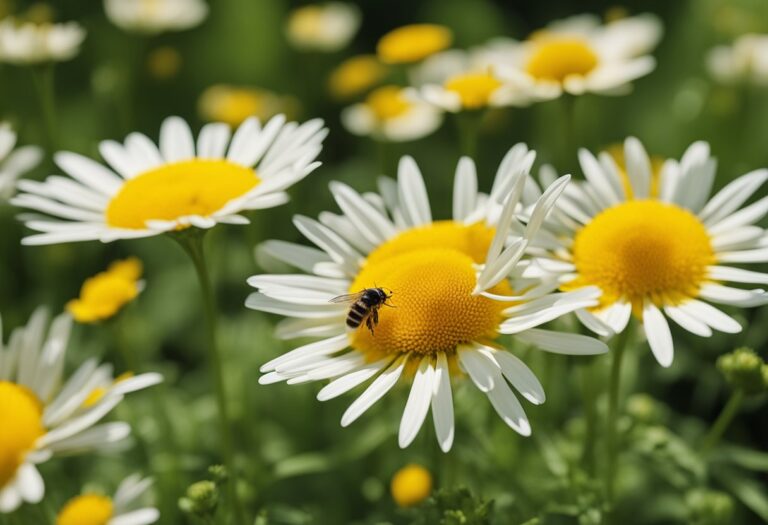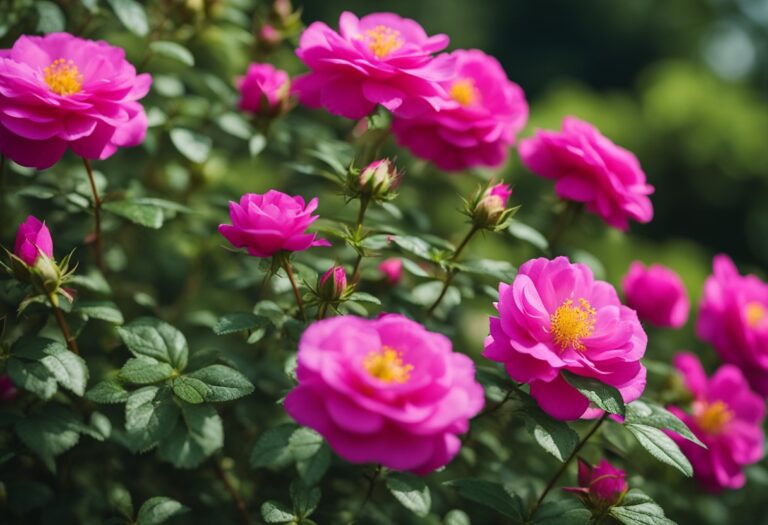Introduction to Hosta ‘Sum and Substance’
Hosta ‘Sum and Substance’ is a standout perennial known for its impressive size and vibrant foliage. It is a cultivar that promises to make a statement in your garden. If you are looking for dramatic foliage, this hosta offers substantial rewards.
Attributes of Hosta ‘Sum and Substance’:
- Size: This plant can attain a width of up to 6 feet and a height of approximately 3 feet, making it one of the largest hosta varieties you can cultivate.
- Leaves: The leaves are distinctively large—one of the key draws of this cultivar—with each leaf reaching up to 20 inches in length. Their color transitions from light green to a more golden hue given sufficient sunlight.
- Tolerance: It is notable for being heat and sunlight tolerant, a trait not common to all hostas.
Here’s what you can expect from the growth habit and appearance:
- Growth Habit: ‘Sum and Substance’ forms a spreading mound, and with its broad, heart-shaped leaves, it exhibits a lush, dense foliage.
- Texture and Color: Its leaves have a glossy appearance and a leathery feel, contributing to its robust nature.
The plant is low maintenance, requiring minimal care to thrive, and is relatively resistant to slugs, a common pest for hostas. Additionally, it produces fragrant flowers on tall scapes, further adding to its garden appeal. Whether used as a single specimen or as part of a mixed perennial border, ‘Sum and Substance’ can be relied upon to deliver visual interest and structure.
Cultivation and Care
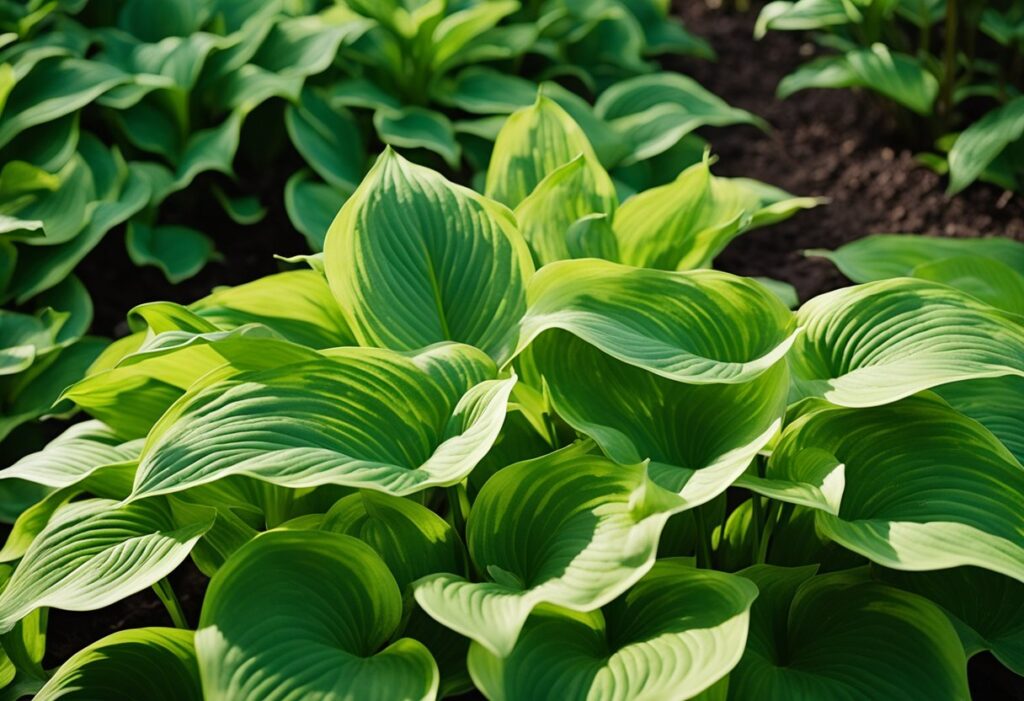
Hosta ‘Sum and Substance’ is a robust perennial with specific needs for optimal growth. Adhere to these guidelines to ensure a healthy and vibrant plant.
Planting Guidelines
To plant your Hosta ‘Sum and Substance’, select a location that provides adequate space as this variety can grow quite large. Your planting area should accommodate a maturity spread of up to 5 feet in width and 3 feet in height.
Dig a hole that’s twice the width of the root ball and just as deep. Gently place the hosta in the hole, fill with soil, and water thoroughly.
Watering Requirements
Water your hosta regularly to keep the soil consistently moist but not waterlogged.
During the first growing season, it’s crucial to maintain even moisture to establish a strong root system.
Afterward, while the plant is tolerant of short periods of dry soil, a routine of 1 inch of water per week is ideal, whether through rainfall or supplemental watering.
Soil and Fertilization
Hosta ‘Sum and Substance’ thrives in well-drained soil rich in organic matter. Aim for a soil pH between 6.0 and 7.5.
A layer of mulch can help retain soil moisture and regulate temperature.
For fertilization, apply a balanced, slow-release fertilizer in the spring as new growth appears.
| Soil Aspect | Recommendation |
|---|---|
| Drainage | Well-draining |
| Organic Matter | High |
| pH | Neutral to slightly acidic (6.0 – 7.5) |
| Fertilization | Balanced, slow-release in early spring |
Light and Temperature
Your plant prefers partial to full shade but can tolerate some direct sunlight, which encourages more golden leaf coloration.
Morning sun with afternoon shade is ideal.
While ‘Sum and Substance’ can withstand a range of temperatures, it is best to protect it from the harsh afternoon sun to prevent leaf burn.
| Aspect | Recommendation |
|---|---|
| Light | Partial to full shade; tolerates morning sun |
| Temperature | Protect from intense heat |
Design and Landscape Use
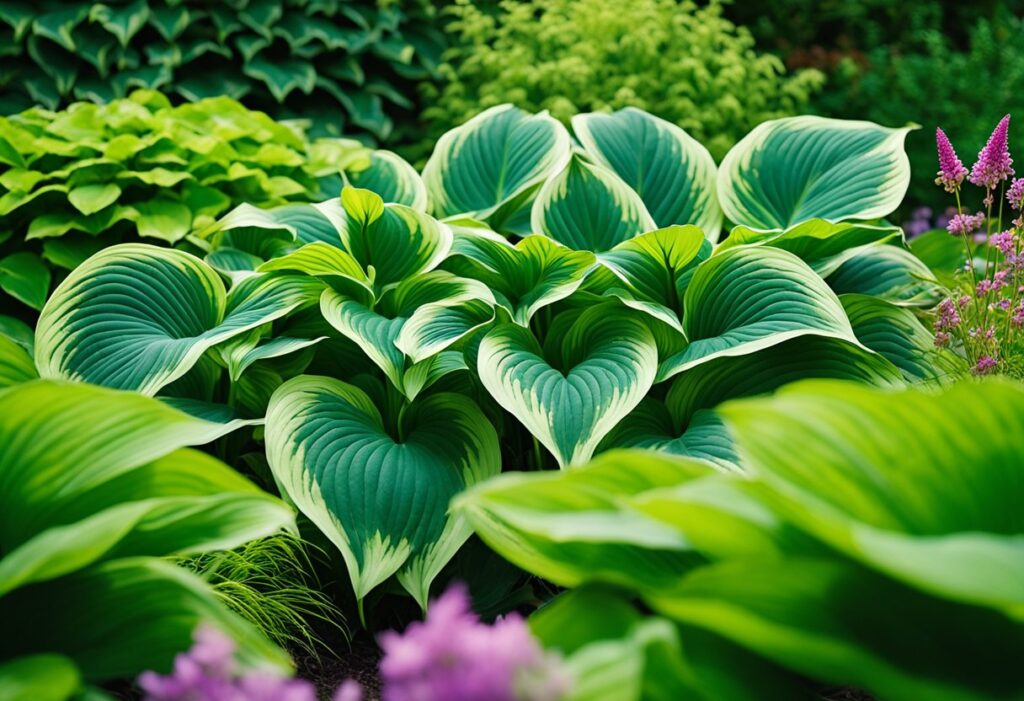
The Hosta ‘Sum and Substance’ is a versatile perennial that brings structure and striking color to your garden. Its large leaves and considerable size make it an excellent focal point.
Companion Plants
When selecting companion plants for your Hosta ‘Sum and Substance’, consider those that contrast yet complement your hosta’s texture and color. Suitable companions include:
- Ferns: Their fine texture contrasts with the broad leaves of the hosta.
- Astilbes: Offer feathery blooms that enhance the hosta’s robust foliage.
- Bleeding hearts (Dicentra): Their delicate, heart-shaped flowers add softness.
By choosing the right companions, you can create a layered, lush planting scheme.
Landscape Design Ideas
Hosta ‘Sum and Substance’ serves multiple roles in landscape design. Here are specific uses:
- Specimen Planting:
- Place as a standalone feature for a dramatic effect.
- Backdrop Planting:
- Utilize its size to create a verdant background for smaller plants.
- Shady Containers:
- Their growth habit makes them ideal for filling out shaded containers.
Your design should also consider the hosta’s light requirements for optimal leaf coloration and its natural spreading habit.
Pests and Diseases

Maintaining the health of your Hosta ‘Sum and Substance’ is paramount, and recognizing the signs of pests and diseases early can help you keep your plant thriving. Below, discover specific actions to manage common pests and tackle diseases effectively.
Common Pests
- Slugs and Snails: You may notice small holes in the leaves of your Hosta ‘Sum and Substance’ accompanied by slimy trails, indicating the presence of slugs and snails.
- Control methods: Use slug and snail baits or barriers like copper strips to protect your plants.
- Black Vine Weevils: These pests typically eat notches around the leaf edges.
- Control methods: Apply beneficial nematodes or insecticidal soap to combat larvae and adults.
Disease Management
- Fusarium Rot: Watch for yellowing leaves transitioning to brown, indicating possible Fusarium rot.
- Action: Remove affected plant parts and apply fungicides as necessary. Ensure well-draining soil to prevent water-logging, which exacerbates this condition.
- Crown Rot: Symptoms include crown softening and leaf wilt.
- Action: Improve soil drainage, and consider soil sterilization for severe cases. Remove and destroy affected plants to prevent spread.
Propagation Methods
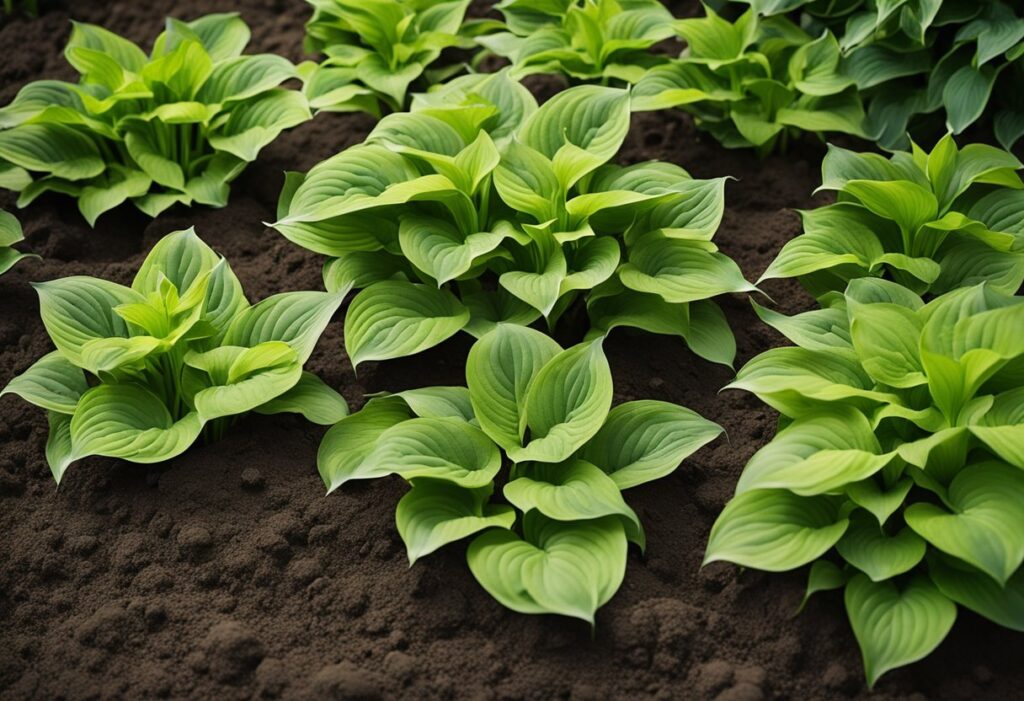
When you decide to propagate your Hosta ‘Sum and Substance,’ you have two primary methods: tissue culture and division.
For tissue culture propagation, you would:
- Take tiny tissue pieces of the plant.
- Grow these pieces in sterile conditions to encourage new plant growth.
This propagation method is sophisticated and typically requires a lab setting.
On the other hand, division, which is more approachable for home gardeners, involves:
- Timing: The best time to divide your hostas is in the spring or early fall.
- Preparation: Ensure you have a sharp spade or knife on hand.
- Process:
- Water your plant a day before to ensure it is hydrated.
- Carefully dig around the perimeter of the plant.
- Lift the entire clump out of the ground.
- Using your spade or knife, cut the clump into smaller sections, making sure each division has at least 2-3 shoots.
Aftercare for both methods includes:
- Planting: Plant your new hostas immediately.
- Watering: Keep the soil consistently moist but not waterlogged.
- Positioning: Place them in a location with similar lighting as the parent plant.
Each division should be spaced adequately to allow for growth. Make sure to monitor the new plantings for pests and any signs of disease.
Frequently Asked Questions

In this section, you’ll find practical information to demystify the care and cultivation of your ‘Sum and Substance’ hosta.
How should ‘Sum and Substance’ hosta be cared for?
Your ‘Sum and Substance’ hosta prefers partially shaded spots but can tolerate some morning sun. Ensure the soil remains moist and well-drained. Mulching helps to retain moisture and suppress weeds.
What is the optimal spacing for planting ‘Sum and Substance’ hosta?
Give your ‘Sum and Substance’ hosta room to reach its full size, by allowing a spacing of about 5 to 6 feet between plants. This ensures ample room for growth.
Is ‘Sum and Substance’ hosta capable of thriving in full sun?
Although ‘Sum and Substance’ can withstand more sun than other hosta varieties, it’s still advisable to provide afternoon shade to prevent leaf scorch, particularly in warmer climates.
What tips are there for successfully growing ‘Sum and Substance’ hosta?
To grow ‘Sum and Substance’ successfully, choose an area with adequate morning sun and partial afternoon shade. Keep the soil consistently moist, and protect the young shoots from slugs and snails.
Which fertilizer is recommended for promoting healthy growth in hostas?
Use a balanced, slow-release fertilizer in the spring as new growth appears. A 10-10-10 NPK formula applied according to the product’s instructions supports healthy growth.
What is the proper method for dividing ‘Sum and Substance’ hosta?
The best time to divide these hostas is in early spring or fall.
Carefully dig around the plant, lift it, and separate the clumps with a sharp knife or spade. Make sure each clump has a few shoots and ample roots.





